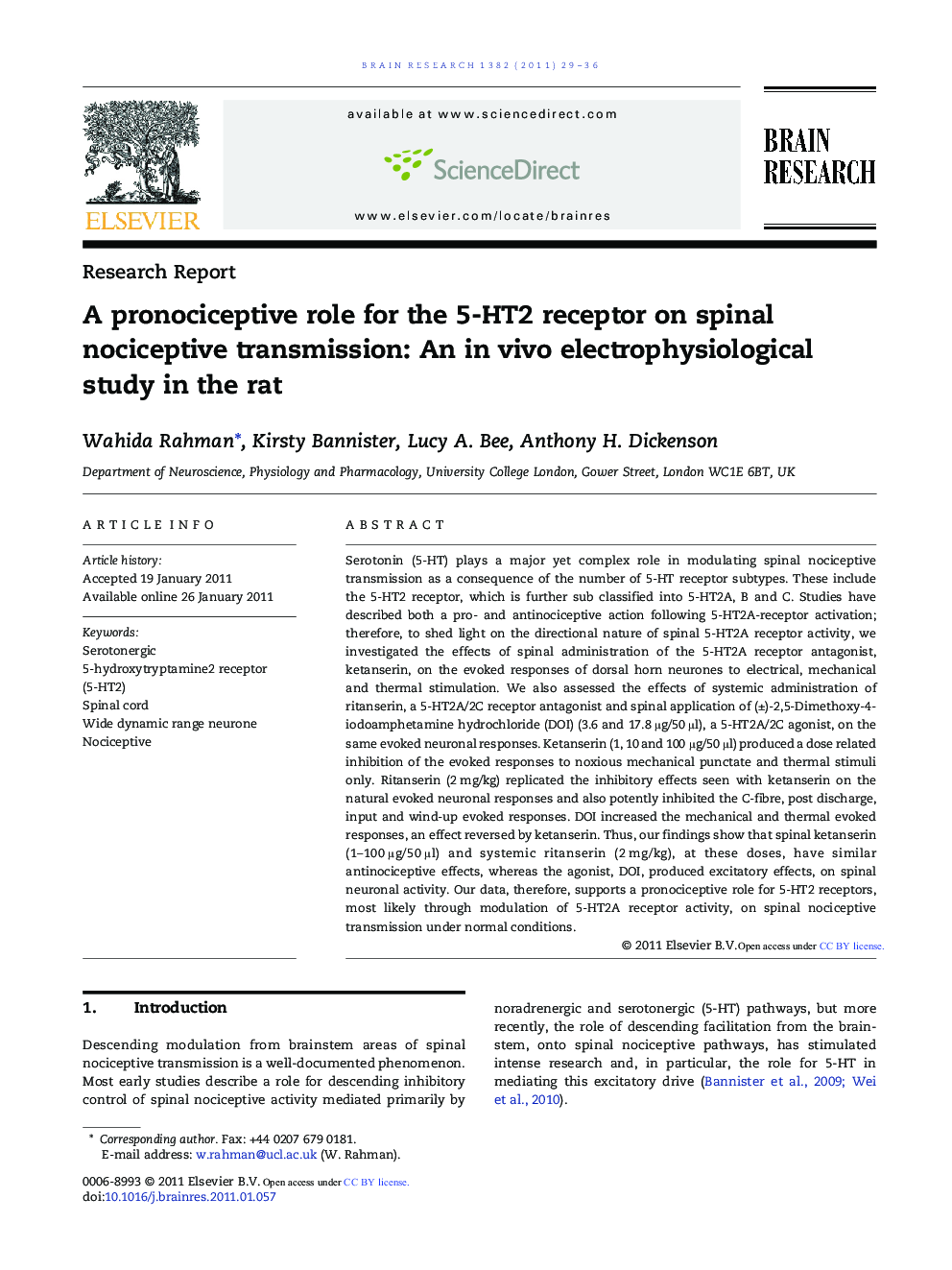| کد مقاله | کد نشریه | سال انتشار | مقاله انگلیسی | نسخه تمام متن |
|---|---|---|---|---|
| 6265055 | 1614057 | 2011 | 8 صفحه PDF | دانلود رایگان |

Serotonin (5-HT) plays a major yet complex role in modulating spinal nociceptive transmission as a consequence of the number of 5-HT receptor subtypes. These include the 5-HT2 receptor, which is further sub classified into 5-HT2A, B and C. Studies have described both a pro- and antinociceptive action following 5-HT2A-receptor activation; therefore, to shed light on the directional nature of spinal 5-HT2A receptor activity, we investigated the effects of spinal administration of the 5-HT2A receptor antagonist, ketanserin, on the evoked responses of dorsal horn neurones to electrical, mechanical and thermal stimulation. We also assessed the effects of systemic administration of ritanserin, a 5-HT2A/2C receptor antagonist and spinal application of (±)-2,5-Dimethoxy-4-iodoamphetamine hydrochloride (DOI) (3.6 and 17.8 μg/50 μl), a 5-HT2A/2C agonist, on the same evoked neuronal responses. Ketanserin (1, 10 and 100 μg/50 μl) produced a dose related inhibition of the evoked responses to noxious mechanical punctate and thermal stimuli only. Ritanserin (2 mg/kg) replicated the inhibitory effects seen with ketanserin on the natural evoked neuronal responses and also potently inhibited the C-fibre, post discharge, input and wind-up evoked responses. DOI increased the mechanical and thermal evoked responses, an effect reversed by ketanserin. Thus, our findings show that spinal ketanserin (1-100 μg/50 μl) and systemic ritanserin (2 mg/kg), at these doses, have similar antinociceptive effects, whereas the agonist, DOI, produced excitatory effects, on spinal neuronal activity. Our data, therefore, supports a pronociceptive role for 5-HT2 receptors, most likely through modulation of 5-HT2A receptor activity, on spinal nociceptive transmission under normal conditions.
Research Highlights⺠Complex role for 5-HT2 receptor in spinal pain modulation. ⺠5-HT2A receptor antagonist, ketanserin, inhibits evoked spinal neuronal responses. ⺠5-HT2A/2C receptor antagonist, ritanserin, inhibits spinal neuronal responses. ⺠5-HT2A/2C receptor agonist, DOI, increases evoked spinal neuronal responses. ⺠Inhibitory effects of ketanserin and ritanserin are comparable. ⺠5-HT2A receptor has a pronociceptive role in spinal nociceptive transmission.
Journal: Brain Research - Volume 1382, 25 March 2011, Pages 29-36